Catriona Rowntree, who looks like she has hardly aged since starting her TV career in her twenties, has never confirmed or denied having Botox or fillers. Dr. Haworth told Daily Mail Australia: ‘It is only on close inspection that clues arise as to what she may have done to keep her appearance polished.’ The former Getaway host Catriona Rowntree has been a fixture on Australian television for more than two decades. Haworth has offered his expert opinion on how she has maintained her youthful complexion over the years.
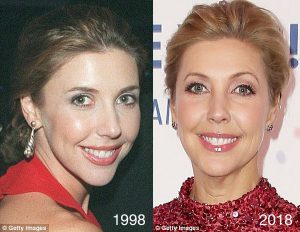 According to Beverly Hills plastic surgeon Dr. Randal Haworth, there are tell-tale signs that suggest she has had ‘subtle’ procedures to her face. ‘Over the years, Catriona is, what I call, a perennial beauty. Starting off as a radiantly attractive woman, any aesthetic procedures she receives must be subtle and “under the radar”, so to speak,’ he explained. ‘It seems that she hasn’t aged one iota since the 1990s,’ Dr. Haworth added.
According to Beverly Hills plastic surgeon Dr. Randal Haworth, there are tell-tale signs that suggest she has had ‘subtle’ procedures to her face. ‘Over the years, Catriona is, what I call, a perennial beauty. Starting off as a radiantly attractive woman, any aesthetic procedures she receives must be subtle and “under the radar”, so to speak,’ he explained. ‘It seems that she hasn’t aged one iota since the 1990s,’ Dr. Haworth added.

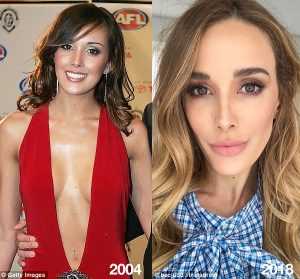
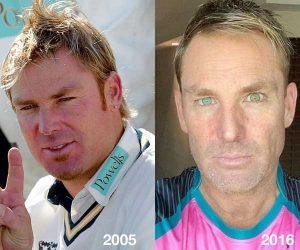 “I suspect that he has dabbled with Botox and perhaps some fillers here and there,” Dr. Haworth told the Daily Mail. “While women’s faces tend to look younger and softer with the right amount of fat, men’s faces tend to look better with weight loss. Shane’s is no exception – his face has become more chiseled, defined and handsome,” he stated. “What’s more interesting is the shape of his eyebrows. It has drastically changed from his younger self when his naturally low-set eyebrows were especially drooping at their outer edge.”
“I suspect that he has dabbled with Botox and perhaps some fillers here and there,” Dr. Haworth told the Daily Mail. “While women’s faces tend to look younger and softer with the right amount of fat, men’s faces tend to look better with weight loss. Shane’s is no exception – his face has become more chiseled, defined and handsome,” he stated. “What’s more interesting is the shape of his eyebrows. It has drastically changed from his younger self when his naturally low-set eyebrows were especially drooping at their outer edge.”
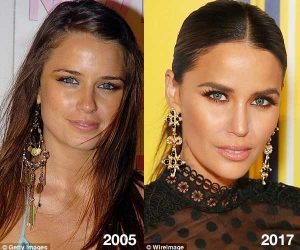 Dr. Haworth claimed that Jodi may have undergone a subtle nose job and dermal fillers to fine-tune her facial proportions. ‘Even though her nasal tip still leans leftwards as it did in her younger years, I suspect she underwent a subtle rhinoplasty to narrow her tip and bony bridge of her nose,’ he explained. Earlier this week, Jodi spoke candidly about her struggles with body confidence, telling The Kyle and Jackie O Show that she has ‘many flaws’. The Neighbours star went on to explain that she puts a lot of pressure on herself to look and feel good.
Dr. Haworth claimed that Jodi may have undergone a subtle nose job and dermal fillers to fine-tune her facial proportions. ‘Even though her nasal tip still leans leftwards as it did in her younger years, I suspect she underwent a subtle rhinoplasty to narrow her tip and bony bridge of her nose,’ he explained. Earlier this week, Jodi spoke candidly about her struggles with body confidence, telling The Kyle and Jackie O Show that she has ‘many flaws’. The Neighbours star went on to explain that she puts a lot of pressure on herself to look and feel good.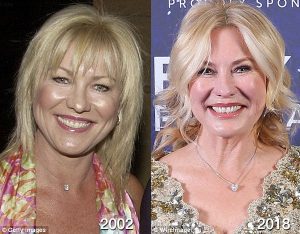 ‘Mrs Kennerley looks better than ever compared to her former self 15 years ago. Though maintaining a healthy lifestyle and weight certainly helps, based on recent photographs, I feel that she enlisted the expertise of a plastic surgeon along the way’, Haworth told Daily Mail Australia this week. Dr. Haworth went on to speculate that Kerri-Anne has used dermal fillers to maintain her youthful complexion.
‘Mrs Kennerley looks better than ever compared to her former self 15 years ago. Though maintaining a healthy lifestyle and weight certainly helps, based on recent photographs, I feel that she enlisted the expertise of a plastic surgeon along the way’, Haworth told Daily Mail Australia this week. Dr. Haworth went on to speculate that Kerri-Anne has used dermal fillers to maintain her youthful complexion.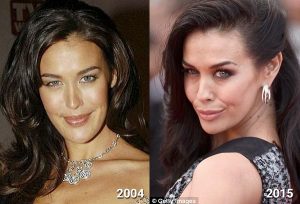 Megan Gale, has long been an advocate for aging gracefully, speaking openly about her views on plastic surgery and why she has chosen not to go under the knife. Beverly Hills plastic surgeon Dr. Randal Haworth has weighed in on Megan’s age-defying appearance. ‘I understand Megan has denied “going under the knife” and, based solely on her photographs, I tend to believe her,’ Dr. Haworth told Daily Mail Australia this week.
Megan Gale, has long been an advocate for aging gracefully, speaking openly about her views on plastic surgery and why she has chosen not to go under the knife. Beverly Hills plastic surgeon Dr. Randal Haworth has weighed in on Megan’s age-defying appearance. ‘I understand Megan has denied “going under the knife” and, based solely on her photographs, I tend to believe her,’ Dr. Haworth told Daily Mail Australia this week.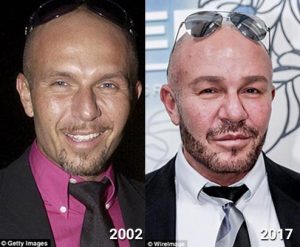 Beverly Hills plastic surgeon Dr. Randal Haworth accused the Australian fashion designer of ‘excessive’ use of anti-wrinkle injections. Haworth observed how Alex, 55, looks remarkably different in before and after photos and may have taken things too far. The Beverly Hills surgeon-to-the-stars claimed Alex’s face now looks ‘crowded’ as a result of ‘too much’ filler.
Beverly Hills plastic surgeon Dr. Randal Haworth accused the Australian fashion designer of ‘excessive’ use of anti-wrinkle injections. Haworth observed how Alex, 55, looks remarkably different in before and after photos and may have taken things too far. The Beverly Hills surgeon-to-the-stars claimed Alex’s face now looks ‘crowded’ as a result of ‘too much’ filler.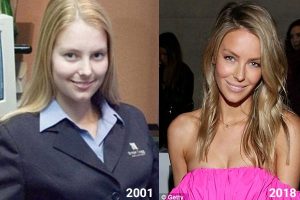 Despite being a household name for 15 years, Jennifer does not appear to have aged a day and is arguably more beautiful now than she was in her early twenties. Dr. Haworth, who has not treated Jennifer himself, stated that the Australian model appears to have invested in some minor improvements to ‘improve facial balance as a whole’. In 2010, Jennifer attributed her drastic change in appearance to healthy eating, exercise and makeup during an interview with The Kyle and Jackie O Show.
Despite being a household name for 15 years, Jennifer does not appear to have aged a day and is arguably more beautiful now than she was in her early twenties. Dr. Haworth, who has not treated Jennifer himself, stated that the Australian model appears to have invested in some minor improvements to ‘improve facial balance as a whole’. In 2010, Jennifer attributed her drastic change in appearance to healthy eating, exercise and makeup during an interview with The Kyle and Jackie O Show.
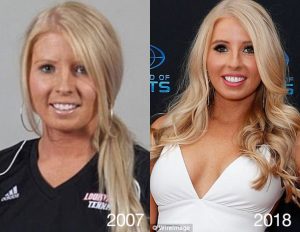 ‘The faint circular ridge bordering the upper portion of her breast strongly suggests the presence of a breast implant’ he said.
‘The faint circular ridge bordering the upper portion of her breast strongly suggests the presence of a breast implant’ he said.
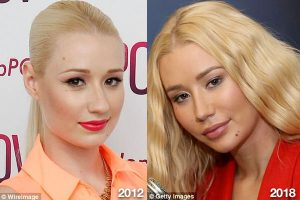 ‘When done right, results can be sublime and indiscernible to a layman’s eye. In the absence of rare complications, less surgical work is needed to create the beautiful, yet subtle, results as exemplified by Ms Azalea – while a less-than-average surgeon could draw unwanted attention to an anatomical “flaw” which only makes things worse.’
‘When done right, results can be sublime and indiscernible to a layman’s eye. In the absence of rare complications, less surgical work is needed to create the beautiful, yet subtle, results as exemplified by Ms Azalea – while a less-than-average surgeon could draw unwanted attention to an anatomical “flaw” which only makes things worse.’